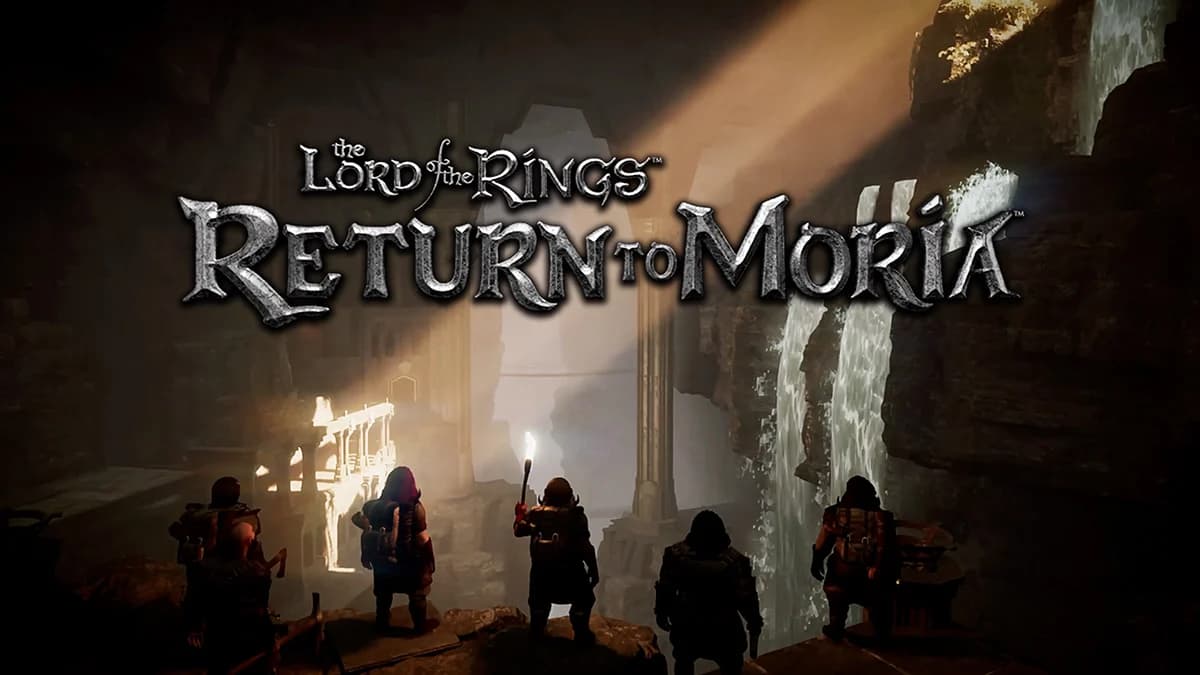
Image source: North Beach Games
Finally, there’s a decent Lord of the Rings game! Ok, that was a bit harsh on poor old Gollum. But Return to Moria really does feel like an authentic experience for hardcore fans. It’s a survival game, set in the beloved universe of J.R.R. Tolkien’s The Lord of the Rings that will test your strategy, resource management, and combat skills in the depths of the infamous Dwarven mines. Whether you’re a novice player or a seasoned gamer, it’s obviously vital to understand the game’s mechanics. Here, our comprehensive Lord of the Rings: Return to Moria beginners tips cover everything from character creation to crafting. It’s a first-steps walkthrough that highlights essential tips and tricks, explaining what to do first in the game. Let’s dive in!
Character & World Creation
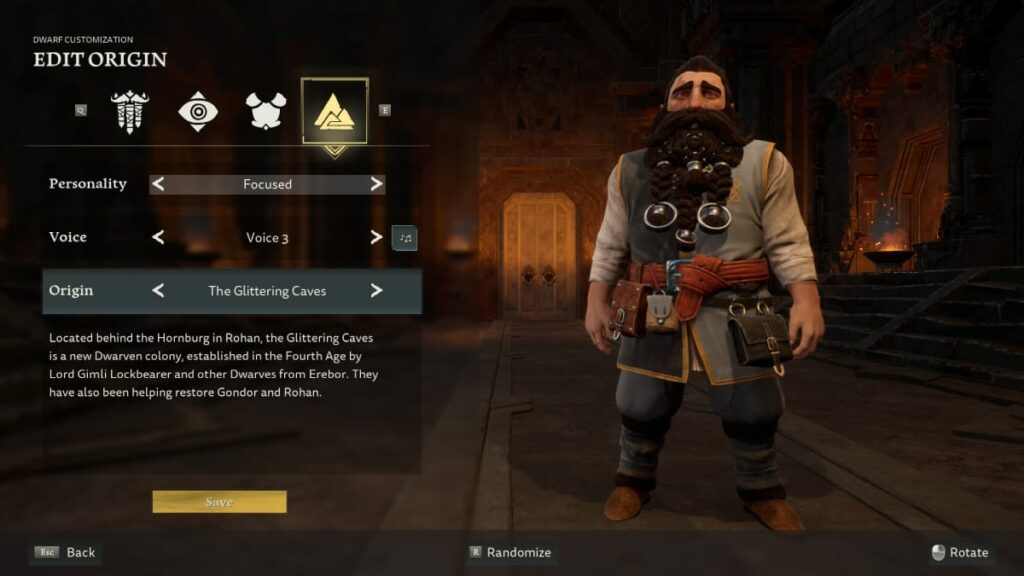
When you launch Return to Moria for the first time, you’ll be asked to customize your Dwarf character. The game provides a plethora of options, from beard and hairstyle to origin story. Don’t stress too much over this: you can alter your character’s attributes at any point in the game.
Next, you’ll create your world, which essentially functions as your save file. Each world is uniquely generated via AI, storing your quests, bases, and resources. You can access your world both offline and online, and switch between the two modes at your convenience. This world can be accessed by you and your buddies via co-op. Keep in mind the game is available on PC via Epic and PS5, but it does not feature any sort of crossplay or have dedicated servers. This functionality is set to arrive in a future update, though, according to the developer’s roadmap.
Understanding the Game Interface
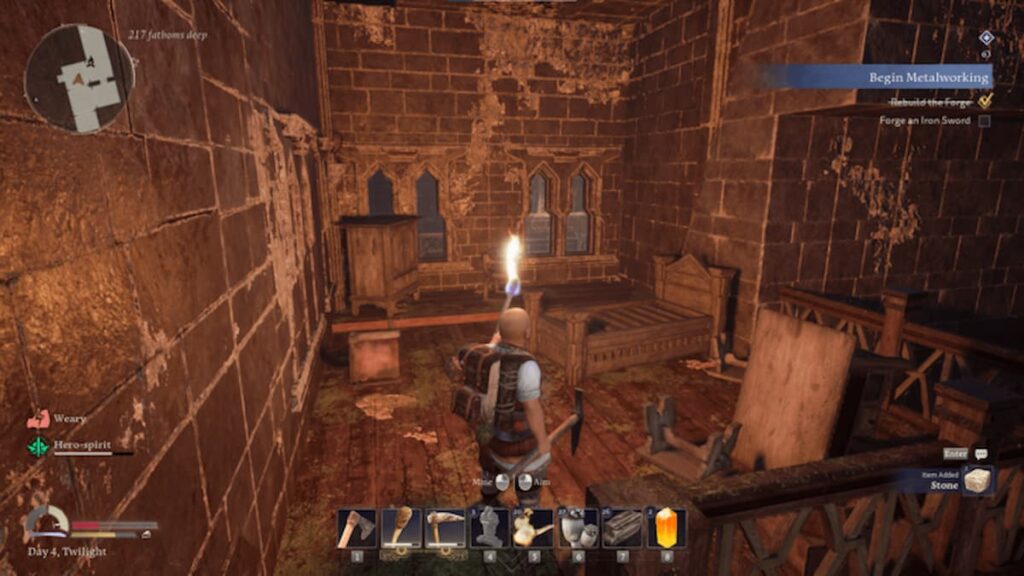
Before delving into gameplay, it’s vital to familiarize yourself with the game’s interface. The Return to Moria HUD (Heads Up Display) features several components:
- Minimap: Displays the vicinity, helping you navigate.
- Depth: Indicates how deep you are in Moria.
- Point of Interest: Shows quest-related markers.
- New Items: Highlights newly unlocked items.
- Buffs and Debuffs: Displays any active effects on your character.
- Health, Armor, Energy, Hunger, and Morale: Tracks your character’s status.
- Hotbar: Provides quick access to your inventory.
- Weapon Controls: Details the controls for your equipped weapon.
- Masterwork: This special inventory slot is for a Masterwork item.
- Chat: This is where your text chat would be displayed.
- Light, Armor, Health, Hunger, Morale, Day and Time, Energy, Stamina, Notifications, Danger Level: These display various stats of your character and environment.
Understanding these elements will help you monitor your progress and plan your moves strategically.
Building Your Base
After the initial tutorial, you’ll start with a small base. At the very least, your base should have a Hearth and a Bedroll. However, a well-established base would also include a Forge, Meal Table, Chests, and a furnace for smelting ingots.
In the early game, you’ll likely be on the move, exploring the caverns and progressing towards the Mines of Moria. While building an expansive base might seem tempting, it’s not the most efficient use of your time at this stage.
When constructing your base, you’ll primarily use the ‘Build’ menu, accessed with the ‘B’ key. The items listed here don’t require many resources, allowing you to construct freely, even early in the game.
Gathering Resources

There’s an abundance of resources in Return to Moria. Obvious sources include wood scraps and iron veins, but others are less conspicuous. Almost everything in the game can be broken down into base resources.
Trees can be chopped, old buildings dismantled, and defeated enemies often drop resources. As you progress into more challenging areas, finding nearby resources becomes crucial.
Certain resources are primarily found in specific locations, necessitating exploration. For instance, Elvish wood is only available in areas where the Wizard marker discusses the power of Elves.
You can read our detailed guide about all Moria resources and where to find them here.
Crafting Essentials
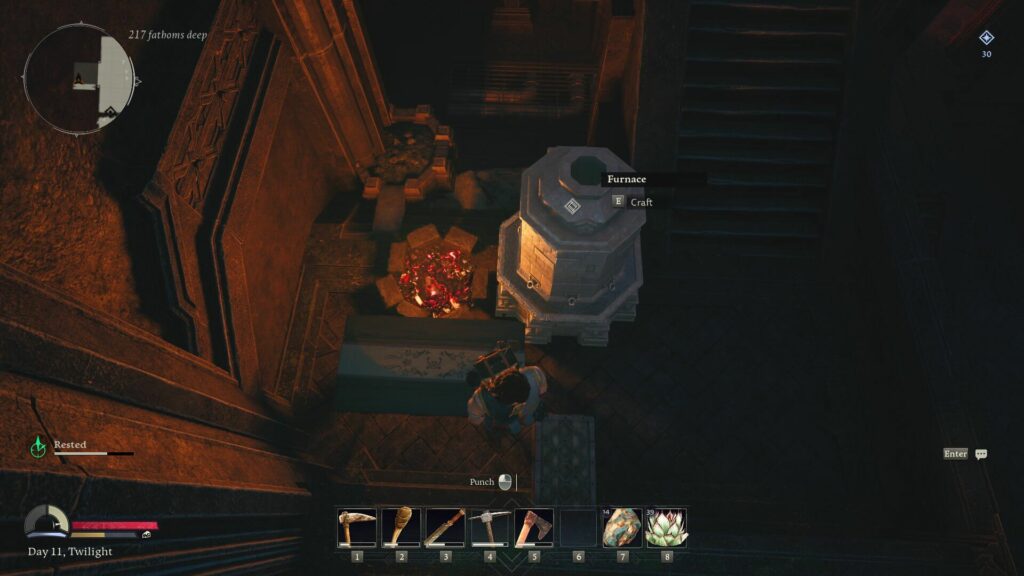
Crafting is a fundamental aspect of Return to Moria. The crafting screen, accessed with the ‘C’ key, provides a list of all known recipes, sorted by the machine required for crafting. This menu also allows you to compare different weapons and armor to ensure you’re crafting the best gear available.
You’ll often need specific devices to craft certain items. For example, to cook a steak on the Hearth, you need a Meat Table. As long as it’s in the same base, you’ll be able to craft recipes that require specific devices.
In Lord of the Ring: Return to Moria, the first items you should craft are as follows:
- Stone Hearth: This is the most essential item, as it allows you to build a base, cook, craft coal, and provides heat and light. Materials needed: Stone x18, Coal x15, Wood Scraps x20.
- Furnace: Crucial for processing materials, especially in the Mines of Moria. Materials needed: Stone x20.
- Forge: Essential for crafting weapons and armor. Materials needed: Iron Ingot x5.
- Bedroll: Serves as a checkpoint and a respawn point. Materials needed: Cloth Scraps x5.
- Repair Smithy: Allows you to repair weapons and armor, reducing the need to create them from scratch. Materials needed: Iron Ingot x5.
Check out our detailed overview of all crafting recipes in Return to Moria for more.
Negative Status Effects (Despair)
As you embark on your journey through the depths of Moria, you’ll quickly come to realize how hunger, weariness, and the looming darkness can impact your cheerful dwarf companion.
Beneath your health bar, a gauge monitors your hunger. Allowing this gauge to reach empty will result in the dreaded Starving status, causing gradual damage to afflict you. While cooking your provisions is the preferred option, in dire situations, consuming raw food can temporarily quell your hunger. At the very least, it will keep the pangs of hunger at bay. If you push yourself without rest, weariness will take hold. This exhaustion will diminish your stamina, making your survival more challenging.
Furthermore, you’ll need to confront the chilling cold and encroaching darkness. Prolonged exposure to darkness will lead to a state of Despair, causing rapid deterioration of your well-being. Similarly, extended periods without a source of warmth will leave you Bone Cold. Both of these afflictions can be alleviated by ensuring the area is adequately illuminated with torches.
Cooking
In Return to Moria, cooking is crucial for survival and healing. To cook, you need a hearth fire and a meal table. You can craft these with basic materials or more sturdy constructions.
- Hearth Fire: Craft it using 10 Wood Scraps, 6 Stone, and 6 Coal. Placing the fire establishes a camp area where you can build other structures.
- Meal Table: Construct it using 10 Wood Scraps and place it near the hearth fire. Interact with the hearth to open the meal crafting menu, where you can turn ingredients into meals that restore hunger and health.
As you progress, you’ll unlock more recipes and cooking utensils like a Stove, Roasting Pit, and Oven.
To unlock recipes, explore Moria’s caverns to discover new ingredients and cooking stations. Finding a new ingredient item unlocks a corresponding recipe. Once a recipe is unlocked, you can cook that meal at any hearth with a meal table attached.
Cooking is not only essential for survival but also helps you heal your dwarf character, making it a vital aspect of gameplay.
Mastering Combat
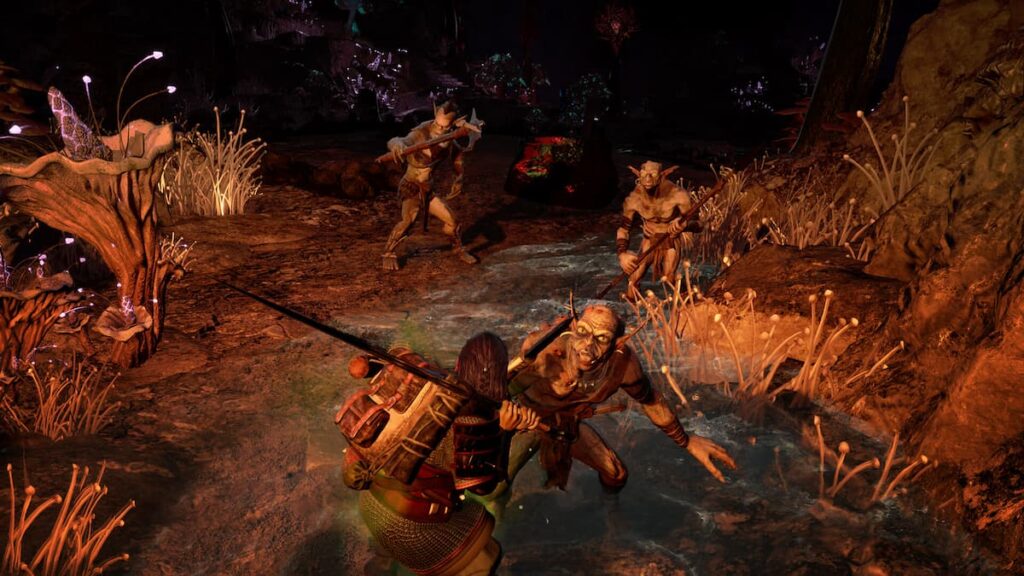
In Return to Moria, combat is inevitable. You’ll often find yourself needing to loot Orc bases or defend your base from enemy attacks. Familiarize yourself with the game’s combat system, which includes attack, charged attack, block, and dodge. There are a variety of enemies in Moria, including cave trolls and dragon boss fights. There’s no Balrog, though (sorry!)
Upgrading your weapons and armor is crucial to surviving in the mines. You can do this by crafting better gear or by upgrading weapons with runes using a Rune Table. These runes imbue your gear with additional abilities, such as extra damage or special effects.
As you progress through different game areas, advancing to a higher Tier of weapons, tools, and armor becomes essential. This progression is necessary to effectively combat the area’s enemies and gain access to new regions. Additionally, it’s crucial to consider the type of damage dealt, as certain foes are vulnerable to specific weapon types (Bludgeoning, Slashing, or Piercing), resulting in critical damage (indicated by yellow numbers).
Remember, you can repair weapons and tools if they’re damaged.
Uncovering Secrets
Exploration is an integral part of Return to Moria. Every inch of the game world is filled with relics, resources, and ruins waiting to be discovered. Exploring these areas will often reward you with smaller quests and vital resources for your main quest. That includes such tasks as restoring damaged statues around Moria in exchange for new recipes.
How to Fast Travel
In your explorations, you’ll also encounter Waypoints, which can be activated to allow fast travel in Return to Moria between locations. However, accessing these Waypoints requires resources like Black Diamond, which are typically obtained by looting Orc hideouts.
Now you’re ready to embark on your journey in The Lord of the Rings: Return to Moria. While there’s much more to discover as you delve deeper, these foundational insights will ensure a smooth start to your adventure. For those looking to customize the experience and/or tweaking the game’s difficulty, check out our wrap-up of the best mods in the game.





